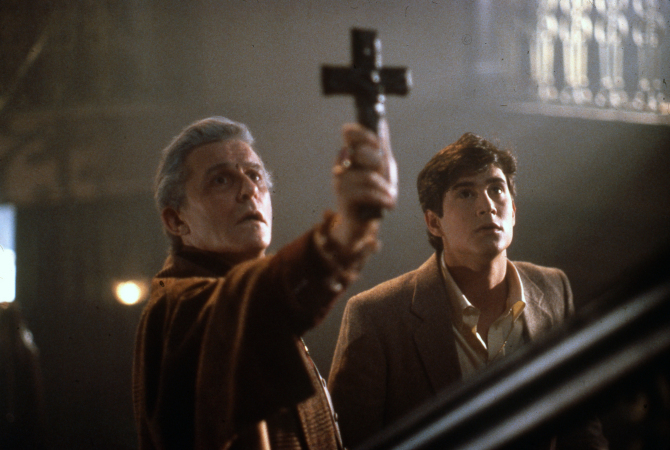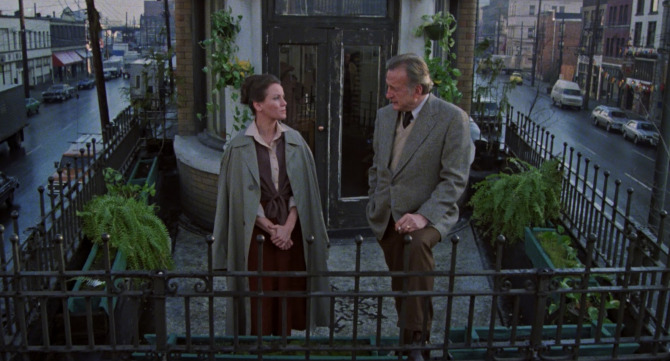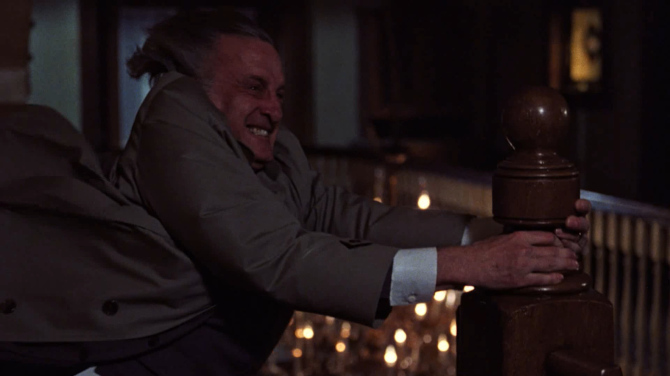I was fortunate to be able to interview actor William Ragsdale on April 24th 2022, at the Cornwall and Area Pop Event (or CAPE). A most entertaining event each and every year, one of the highlights was a reunion of Ragsdale and Amanda Bearse – two of the stars of Tom Holland’s horror cult classic Fright Night (you can find their recollections of the film, as well as Ms. Bearse’s Star Pick interview here on Filmizon.com). It is also worth noting that Ragsdale returned for Fright Night’s sequel, and has continued working ever since. . . recently having a memorable three year stint on the excellent series Justified. . . while speaking of horror, he had a cool cameo in 2023’s Renfield – back in the vampire realm once more.
When our conversation turned to his favourite film, it did not take him long to highlight a horror classic – 1980’s The Changeling, starring George C. Scott. This is what he had to say: “I love that movie [The Changeling]. When it came out I thought it was brilliant. It had strong performances from George C. Scott and Melvyn Douglas. For me, the shock stuff is not so great, I really love the ambience and how things are created. . . it is almost like how Guillermo del Toro builds his atmosphere. I really like feeling like this is a place I’m going into and hanging out. And, of course, that movie was all about that. If the setting is correct, I enjoy it – and The Changeling just had it.” It is also worth noting that he gave a shout-out to The Exorcist earlier in the interview as well.
Canada is not often thought of as a bastion for horror films. . . but in the 1970s and into the early 80s, a large number of impressive works within the genre were produced. Foremost, movie fans will remember David Cronenberg’s catalogue, as this is when he began crafting his own unique sub-genre of body horror (think Shivers, Rabid and The Brood – 1975, 77 and 79 respectively). Then there was one of the triumvirate of films that spawned the slasher craze – namely Black Christmas (1974). . . which in turn, led to Canadian horror such as Prom Night (1980), Terror Train (1980), My Bloody Valentine (1981), Happy Birthday to Me (1981). . . all of which are quite respected amongst this new sub-genre of horror. And lastly, there was The Changeling (1980), a higher class haunted house horror picture starring the above mentioned George C. Scott.
The winner of the inaugural Genie Award for Best Picture – Canada’s equivalent to the Academy Awards (since 2013, it has blandly been renamed the Canadian Screen Awards – adding to the ‘Canadians being boring’ stereotype), The Changeling, directed by Peter Medak, opens with a rather jarring scene. . . with composer John Russell (Scott) witnessing the death of his wife and daughter by way of snowy roadside collision while at a payphone calling for assistance.
In a melancholic fugue state for months, Russell tries to shake himself out of it by moving from New York to Seattle, taking a job as a university professor. Done in such quick fashion that he hasn’t even had time to locate a place to live, he is fortunate to meet new friend Claire Norman (Trish Van Devere – who also won a Genie for Best Foreign Actress), a member of the Historical Preservation Society that is able to get him a mansion at a downright cheap cost.
Located on a massive estate and previously owned by the father of current Senator Carmichael (Melvyn Douglas), the historic abode has not been lived in for many a year. Featuring a sweeping multistory staircase, innumerable stained-glass windows, and its very own ornate music room, it is seeming perfection.
Settling in, it does not take long for anyone to realize that the house might possess more secrets than at first glance. As if echoing from the past (oddly enough, the home’s history seems to become almost intertwined with Russell’s own haunting memories), the occurrences start small. . . a sole piano key not working (only to ting out afterwards), or a rhythmic clanging sound each morning at exactly six A.M., it certainly puts our protagonist on his guard.
Looking for answers within the Historical Preservation Society, oddly enough, there are no records prior to 1920. . . despite Russell finding a hidden and padlocked attic room that has a notebook dated 1909. He also finds a music box in said room which eerily plays a lullaby that he had started composing since moving into the house. With Claire’s help, the pair attempt to uncover the deep dark secrets the mansion holds within it. . . and perhaps even more surprisingly, outside of it as well.
Built in a most beautifully somber way, Medak and his team (including writers Russell Hunter, William Gray, and Diana Maddox) concoct a multi-layered story of past, present, and future. Russell, our conduit, attempts to move on from his past, recapture his present, and find some solace in the future. The home, as if sensing his pain, reaches out, looking to find its own form of rest. Echoed by a haunting score by Rick Wilkins, it lives by way of piano, strings, and chanting, resonating somewhere between mournful and downright spooky, while the music box lullaby, which was written by Howard Blake, provides a soul-stirring poignancy that can only be tied to the loss suffered at the beginning of the narrative. When combined with the visuals, this film’s unnerving essence is disquietingly palpable.
There is no denying that the mansion is, in fact, its own character. . . a living, breathing entity. Russell’s memories, now forever tainted by that fateful day, are enveloped by the manor, utilizing the ball his daughter used to play with in its own form of foreplay. Haunted by the sound of the ball bouncing down the staircase (which he had put away in a desk), he cannot stand it and drives away to throw the toy into the river. . . only for him to return home and have it come right down the same stairs once more – the true meaning of horror.
Further enlivened by the cinematography (thanks to director of photography John Coquillon), handheld camera work warns us of the coming spirit, while the shadows within the house feel as if they too have their own past. Different framing and camera placements are used to great effect, the seance a prime example of this. Visions of the past weave within the present, and, as we glide towards the climax, the audience knows we are in for a wild ride.
An influential and most memorable piece (consider Martin Scorsese, Neve Campbell, film maker Alejandro Amenábar – The Others, and William Ragsdale fans), The Changeling is a key piece in the haunted house horror realm. Featuring a strong and emotive performance by George C. Scott, slow burner scares, and a most chilling gothic-tinged atmosphere, it is what horror, at its most pure, should be. So, fire up this 80s terror-ific classic, it’s a fixture of Canadian horror.






